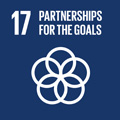- Docente: Valentina Presutti
- Credits: 6
- SSD: INF/01
- Language: English
- Moduli: Valentina Presutti (Modulo 1) Andrea Giovanni Nuzzolese (Modulo 2)
- Teaching Mode: Traditional lectures (Modulo 1) Traditional lectures (Modulo 2)
- Campus: Bologna
- Corso: Second cycle degree programme (LM) in Artificial Intelligence (cod. 9063)
-
from Feb 20, 2025 to May 22, 2025
-
from May 27, 2025 to Jun 12, 2025
Learning outcomes
At the end of the course, the student knows some (semi-)automated methods for joint interpretation of data and content as sources of knowledge. The student masters the basics of knowledge extraction, engineering, and linking, making data suitable to machine querying and automated reasoning, typically on decentralized platforms such as the Web.
Course contents
Knowledge graphs and ontologies
Semantic Web standards: OWL, RDF, SPARQL
Ontology Design methodologies and ontology design patterns
Reasoning methods, neuro-symbolic reasoning
Large Language Models and Knowledge Engineering: applications and research challenges
Knowledge extraction use cases: text and music
Readings/Bibliography
Notes and slides provided by the teacher.
Hitzler, P., Gangemi, A., & Janowicz, K. (2016). Ontology Engineering with Ontology Design Patterns. Amsterdam: IOS Press.
P.A. Bonatti, S. Decker, A. Polleres, V. Presutti, Knowledge graphs: new directions for knowledge representation on the Semantic Web (dagstuhl seminar 18371). Dagstuhl Rep. 8(9), 29–111 (2019)
Aidan Hogan et. al. Knowledge graphs. ACM Computing Surveys, Vol. 54, No. 4, Article 71
Semantic Web (W3C Recommendations):
OWL 2: https://www.w3.org/TR/2012/REC-owl2-rdf-based-semantics-20121211/
RDF: https://www.w3.org/TR/2014/REC-rdf11-mt-20140225/
SPARQL: https://www.w3.org/TR/2013/REC-sparql11-query-20130321
Teaching methods
Lectures, lab practice, homework, and self-assessment quizzes.
Assessment methods
- Group project: selected from a list proposed by the teachers (with individual assessment)
Project: The students will apply the semantic modeling methodologies acquired and experimented during the course, for the creation of a knowledge graph starting from existing resources (database, text, etc.), reusing / extending other ontologies and where necessary applying knowledge extraction tools, entity linking, ontology alignment, etc.
Teachers will assign a project to each group and will provide the specification for its realisation. Before the assignment each group will have the possibility to express two preferences on a list of available projects. Priority will be given to students' preference if possible, it cannot be guaranteed though that they will be addressed (in case of conflicts).
Teaching tools
Slides, tools for self-assessment and, discord for asynchronous discussions and communication.
Office hours
See the website of Valentina Presutti
See the website of Andrea Giovanni Nuzzolese
SDGs


This teaching activity contributes to the achievement of the Sustainable Development Goals of the UN 2030 Agenda.
